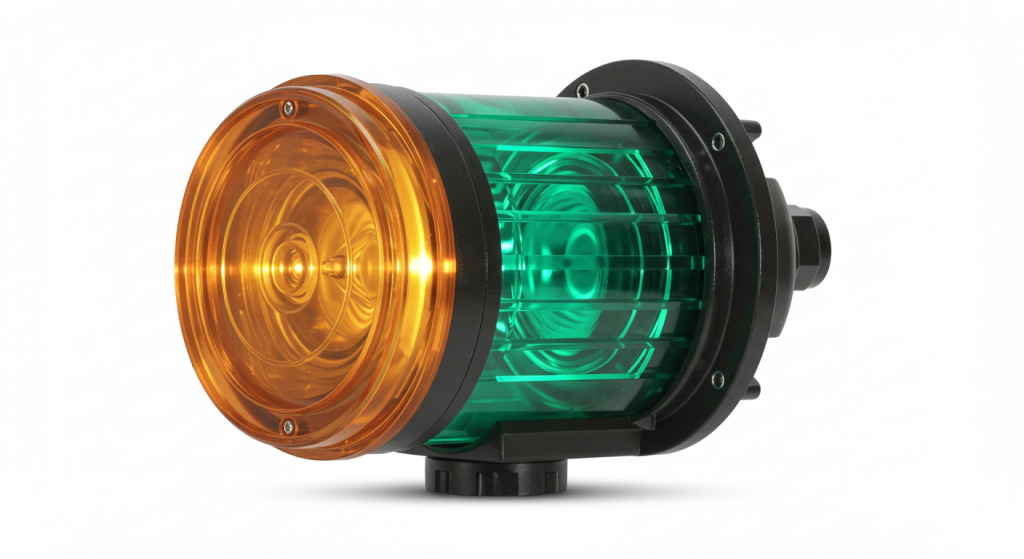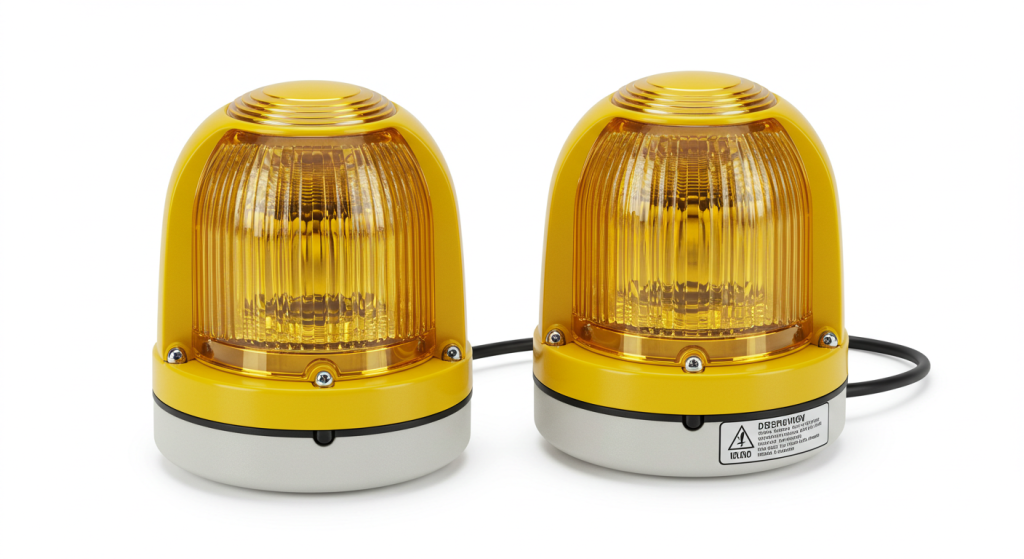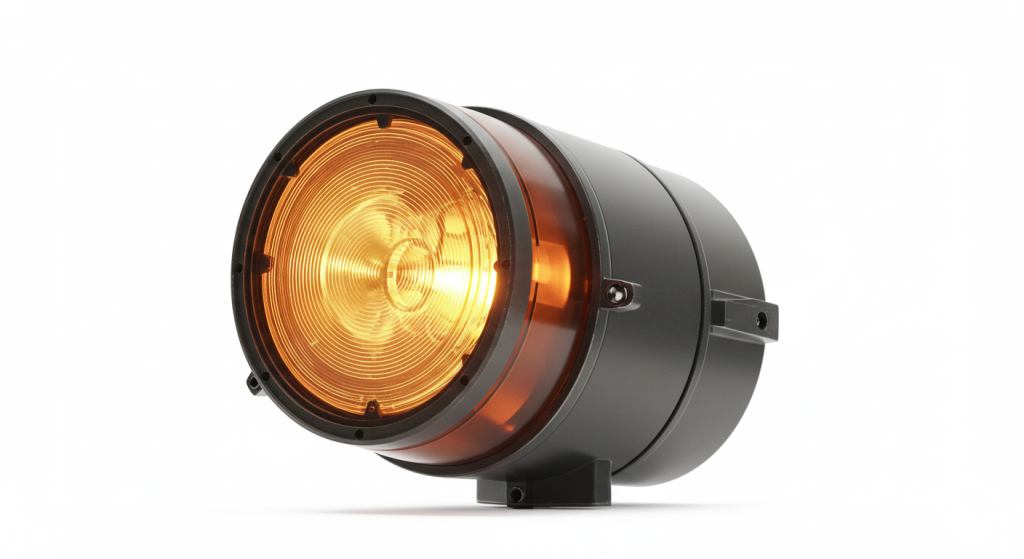Ensuring the safety of air navigation depends on various measures, and one of the most critical aspects is the proper marking and lighting of obstructions. The question of Why to buy aviation red obstruction lights is essential for anyone involved in aviation or the construction of tall structures. These lights, specifically designed for aviation purposes, play a crucial role in preventing accidents. This article will delve into the various reasons behind using red obstruction lights in aviation, and discuss How to buy led aviation obstruction light, and provide guidance on different types of aviation lighting. We’ll also explore the requirements and specifications that define these essential safety devices.

Understanding the Importance of Aviation Obstruction Lights
Obstruction lights, especially the red variety, are a cornerstone of aviation safety. They serve as a visual warning for pilots, indicating the presence of tall structures that could pose a collision risk. These lights are not merely for decoration; they are specifically engineered to provide maximum visibility under a variety of conditions.
What is the Purpose of Obstruction Lighting?
The primary purpose of obstruction lighting is to make tall structures visible to pilots, thereby preventing collisions. These structures can include buildings, towers, communication masts, wind turbines, and other tall objects that can interfere with low-altitude air traffic. Properly placed and functional obstruction lights are crucial for safety, particularly in low visibility conditions or at night. Obstruction lights provide a vital visual aid that allows pilots to avoid potential accidents.
Why Do Airplanes Use Red Lights?
While airplanes use a variety of colored lights for different purposes, red lights on airplanes are primarily used as navigation lights and anti-collision lights. Red lights are specifically used because they are easily distinguishable and visible from long distances at night and during low-light conditions. Red, as a color, is a standard for indicating a potential hazard or obstruction. Therefore the red obstruction lights serve the same function, which is to communicate a warning of an obstacle to the pilot.
Why Do Tall Buildings Have Red Lights on Top?
Tall buildings have red lights on top for the same reason as other structures with obstruction lights. They serve as a warning to pilots that there is a tall object in their flight path. These red lights are a part of aviation obstruction lighting standards, ensuring that pilots are aware of the presence of tall structures, especially during nighttime or low visibility conditions. The red color provides a clear indication of a potential danger to approaching aircraft.

Exploring the Standards and Specifications of Obstruction Lights
Aviation obstruction lighting is not a haphazard installation of lights; it follows rigorous standards and specifications to ensure maximum effectiveness. These standards are often set by aviation authorities, such as the FAA, and must be adhered to by anyone responsible for erecting and maintaining tall structures.
What is the Standard for Obstruction Light?
The standards for obstruction lights generally dictate the color, intensity, flash rate, and positioning of lights depending on the height and location of the obstruction. The color is mainly red for low and medium intensity lights. The standard also calls for white strobe lights for higher structures and in conjunction with red lighting. These standards ensure consistency and allow pilots to easily recognize the presence of an obstacle. For example, FAA standards dictate that low intensity lights must be steady burning red lights. Medium and high intensity have more specific requirements with steady and flashing light usage.
Aviation Obstruction Lights Specifications
Aviation obstruction light specifications cover a wide range of requirements, from the intensity and color of the light to the required viewing angle and durability of the light fixture. The specifications will include electrical requirements and installation standards. This includes information on the life span of the lights and the replacement schedule. The specifications also make allowances for the location of the obstruction and how the lights should be positioned for maximum effectiveness. They are designed to enhance visibility to ensure that tall structures are clearly marked, especially at night or during periods of limited visibility. These specifications are critical for safe aviation operations.
Types of Aviation Obstruction Lighting
There is a variety of obstruction lights, each with specific applications and intended use cases.
LED Aviation Obstruction Light
LED Aviation Obstruction lights are increasingly popular due to their energy efficiency, long life span, and low maintenance requirements. LED lights offer the same visibility and light intensity as traditional incandescent or halogen lights, but at a fraction of the energy consumption. LED lights have now become the standard for aviation obstruction lights because of their long-term cost savings and environmentally friendly nature. LED’s are the leading choice because of their dependability.
LED Obstruction Lights
LED obstruction lights are essentially any obstruction lights that utilize LED technology. They are available in a variety of intensities, from low to medium and high intensity, and can be used for various types of obstructions and height requirements. They can be steady-burning red lights, flashing red lights, or white strobe lights depending on the needs of the situation. The use of LED technology in obstruction lights offers significant advantages for all situations.
Aviation Light
Aviation Light is a broad term that covers all types of lighting used in aviation. This includes not only obstruction lights, but also runway lights, approach lights, and other visual aids used to ensure the safe operation of aircraft. The proper use of aviation lights, which includes obstruction lights, are all critical components of air safety.
Solar Obstruction Light
Solar obstruction lights offer an alternative for locations where traditional power sources are impractical or costly. These lights utilize solar panels to recharge a battery, which then powers the LED obstruction light. Solar obstruction lights are very popular for remote locations and for temporary obstruction marking. Solar obstruction lights help reduce infrastructure costs and are environmentally conscious. The functionality and reliability is the same as a standard electric powered unit.

Additional Considerations for Aviation Obstruction Lighting
Besides understanding the types and specifications of aviation obstruction lights, there are additional factors to consider when deploying these safety systems.
Aircraft Warning Lights Regulations
Aircraft warning light regulations, such as those set by the FAA, govern the use and placement of obstruction lights on buildings, towers, and other structures. These regulations specify which type of lights are required for certain types of structures. These also state the proper spacing of the lights and the operational requirements of the lights. The regulations also discuss the testing, inspection, and maintenance of these lights to make sure they are always operational. These regulations must be adhered to ensure full compliance and maximum safety.
Aircraft Warning Lights for Buildings
Buildings located near airports or in flight paths require proper aircraft warning lights. These lights are essentially the same as obstruction lights. These ensure that the buildings are visible to approaching aircraft. The type and intensity of the lighting will depend on the building’s height, and location relative to nearby airports and air traffic patterns. It is essential that these lights are regularly maintained and meet all current regulations to maximize air safety.
Procurement: How to Buy LED Aviation Obstruction Lights
Purchasing aviation obstruction lighting requires careful planning and consideration. How to buy led aviation obstruction light involves several steps. First, assess the requirements of your situation, including the height and location of the structure. Second, identify all regulatory requirements. Third, find a reputable supplier that offers high-quality, compliant LED obstruction lights. Fourth, ensure that they have a good warranty and maintenance program. Fifth, seek quotes from multiple suppliers and perform a cost-benefit analysis. Finally, always verify that the lights are compliant with current standards before final purchase.
When considering How to buy led aviation obstruction light, remember that cost shouldn’t be the sole consideration. The quality and reliability of the lights are very important for long term safety and operation. Investing in a better system that requires less maintenance and has a longer life-span, may be the right decision. Be aware of any installation requirements and make sure that there is a plan to install and maintain your obstruction light system.
Where to Buy LED Rotating Beacon Light
In situations where greater visibility is needed, LED rotating beacon lights are very useful. Rotating beacons provide a sweeping beam of light and provide increased visibility in all directions. When considering Where to Buy LED Rotating Beacon Light you need to consider reputable suppliers who specialize in aviation lighting systems. These are critical for emergency situations and at locations where increased visibility is essential. When selecting rotating beacons, it’s important to confirm they meet all appropriate safety and performance standards. Where to Buy LED Rotating Beacon Light also involves checking user reviews, warranty information, and ongoing support. These lights should be purchased from a trusted source that provides high quality product and excellent customer service. Also verify they provide support for all necessary requirements.
Purchasing LED rotating beacon lights, is usually based on very specific requirements and locations. Make sure you have completed all the research to ensure they are the appropriate light for your situation. A proper rotating beacon light will also increase visibility and safety to the required level for the conditions.
The Value of Aviation Red Obstruction Lights
Finally, to reiterate the value, Why to buy aviation red obstruction lights is a crucial aspect of aviation safety. These lights are more than just an added expense; they are a critical investment in preventing potential accidents. The red lights serve as a clear and universal visual warning, helping pilots to identify the presence of tall structures in all weather conditions. By adhering to all relevant standards and using high-quality obstruction lights, the operators of these tall structures can help ensure safe air operations. These lights are not only about compliance, but about the safety of all the air traffic.
In conclusion, Why to buy aviation red obstruction lights is primarily about air safety and the safety of all those who fly. Understanding the purpose, standards, and specifications of these lights, and making informed decisions, is the best way to reduce risk and improve the overall safety of flight. Making a sound decision about How to buy led aviation obstruction light is a critical component of this process as is knowing Where to Buy LED Rotating Beacon Light when the need arises. This overall decision needs to have safety as the priority.